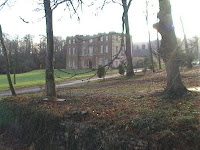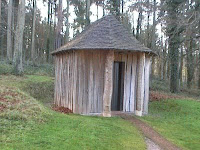
Multi Use Community Resource Centres for Cheltenham
Last Friday saw the official opening of Cheltenham’s third community resource centre at Oakley, performed by Eddie the Eagle.
Single capital pots for these types of building are very rare indeed these days. Many are assembled as a finance jigsaw, a composite of 106 commuted sums, recycled capital receipt, lottery and similar external funding bodies. It takes tenacity. Springbank involved re designation of a redundant allotment site, and an agreement to use a sizable part of the capital receipt to upgrade remaining allotments borough wide, commuted sums for the green space and community art, six successful external funding bids, Sure Start funding and RSL partner capital contributions. Revenue was underpinned by PCT health and dental services, a commercial pharmacy, Cheltenham Borough Homes and office lets.
Revenue funding through rent and service charge can be a similar jigsaw but what really helps is a substantial, solid base rent payer. At Hesters Way and Springbank the Primary Care Trust, commercial pharmacy and Puddles nursery are major players, at Oakley its Cheltenham Borough Homes a housing management ALMO. Other office spaces are tenanted by a mixture of local not for profit, small private commercial and agency outreach services these complimenting larger multi purpose community and youth spaces.
In both Hesters Way/Springbank and Oakley the core community organisation is a community regeneration partnership – the strategic organisation, a not for profit registered company with a board of directors drawn from private, public and voluntary sectors – and a neighbourhood project delivering services on the ground. In terms of the buildings they are in the ownership of the partnerships on long leases with the projects providing facilities management as well as community services.
The concept is a long way removed from the older style community centre or village hall. They are designed with longevity and commercial sustainability in mind whilst still being local community owned and based. They are designed to have an active and involved customer base. Such buildings only get off the drawing board with the helping hand of a committed and insightful local authority and community activists with vision. Such buildings only come alive with people in them. In areas with little or no community infra structure larger buildings have a broad provision of community health outreach, pharmacy, doctors, dentist, skills training and lifelong learning, commercial, function rooms and sports halls. In other better resourced areas it is important that they complement rather than compete. The Oakley centre completes a campus of provision complimenting a children’s centre, youth club, park and sports field providing lifelong learning and skills training together with neighbourhood management services, a community function room and sports changing facilities.
In all cases the technical and mentoring skills and knowledge of the community architect firm working with the partnerships, Quattro Design, was invaluable. Such a firm with a feel for this type of project and its complex issues is essential.
Amongst the complexities to be mastered are VAT with regard to the building and room hire and a fit for purpose lease and service level agreement. Whilst the council acts as a major facilitator it is important for the independence and sustainability of these projects that the community group takes early ownership. At Springbank an established partnership with experience of a similar project were geared up for full project management.. A project management fee was negotiated with a developer, providing a commuted sum, direct to the developer partnership. Oakley was a joint venture between the Council and the Oakley partnership.




 This is why it was quite difficult explaining the building. You entered via the back door. It appeared a reasonably furnished though dour hermitage, thus designed do that when you opened the front door the contrast was breathtaking. You stood on a 12'sq diameter paved patio under an 18' high umbrello and looked out on a panorama that stretched from the Cheddar Mendips, past Weston, over the Severn estuary and past Minehead.
This is why it was quite difficult explaining the building. You entered via the back door. It appeared a reasonably furnished though dour hermitage, thus designed do that when you opened the front door the contrast was breathtaking. You stood on a 12'sq diameter paved patio under an 18' high umbrello and looked out on a panorama that stretched from the Cheddar Mendips, past Weston, over the Severn estuary and past Minehead.













































